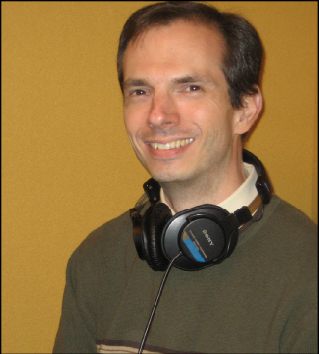LIGHT ONE CANDLE
By Tony Rossi
Food banks are a blessing to hungry people. But did you know they were started by a Catholic man, John van Hengel, inspired by his faith and the hardships he endured? The Christopher Award-winning children’s book “Food for Hope,” written by Jeff Gottesfeld, tells that story.

During van Hengel’s early life, there were no indications he would ever go hungry. He grew up in Wisconsin, attended college and grad school, moved to California, married a model, had two children, and thrived as a salesman for a sportswear company. Then, it all fell apart. Van Hengel lost his job and got divorced. He returned to Wisconsin and found work in a rock quarry. But while breaking up a fight, he endured a spinal injury, which required surgery. Still, he was in pain and needed rehabilitation, so on his doctor’s advice, he moved to Arizona, where the warmer weather might help his recovery.
That’s how van Hengel, now destitute, wound up in Phoenix in 1967 at a St. Vincent de Paul-run soup kitchen at St. Mary’s Catholic Church. In “Food for Hope,” Gottesfeld writes, “John liked people. He talked with everyone in the dining room – disabled veterans, the homeless, and kids whose parents had to choose between rent and food. Their stories opened his heart. He found work at the kitchen, shelter in a cheap room above a garage, and faith in prayer with Father Ronald at St. Mary’s Church.”
The menu at the soup kitchen was minimal (soup, rice, beans, powdered milk), so van Hengel asked a local citrus orchard if he could collect the grapefruits that had fallen off their trees and would otherwise be thrown away. They agreed, and fresh fruit made its way onto the menu. Then came the incident that changed everything. A woman took van Hengel to a supermarket dumpster and showed him all the edible food that had been discarded. She said, “I just wish I could put this stuff in a bank.”
Van Hengel loved the idea, so he went back to St. Mary’s and told Father Ronald, a Franciscan priest, that they should start a bank to store food. Father Ronald agreed and told van Hengel, “Do it.” Van Hengel protested that he already worked at the soup kitchen and didn’t have time. Father Ronald responded, “You heard the call, John. Decide if you want to listen.” He listened. And above his desk, van Hengel wrote a Biblical quote, but gave it his own twist: “The poor we shall always have with us, but why the hungry?”
Gottesfeld said, “St. Mary’s Church gave him an abandoned bakery on Skid Row in Phoenix, and he started there …They did 125,000 pounds of food their first year…This past year, the St. Mary’s Food Bank in Phoenix did 125 million.” Motivated by his faith, van Hengel kept growing the food bank idea and eventually turned it into the nonprofit America’s Second Harvest, which helped create food banks around the country. He also chose to live in relative poverty because he looked back on his life and realized that money had not made him happy.
Gottesfeld hopes that children and families read “Food for Hope,” and find that it motivates them to make a difference. He concluded, “Don’t take food for granted. It is not automatic for big segments of our society … [Also], volunteer … What’s great about food, it’s completely nonpartisan … All it has to do is with feeding people … Know that you’re working alongside other Americans doing the same thing … What matters is your energy and your goodness.”
(Tony Rossi is the Communications Director for The Christophers, a Catholic media company. The mission of The Christophers is to encourage people of all ages, and from all walks of life, to use their God-given talents to make a positive difference in the world. Learn more at www.christophers.org.)
